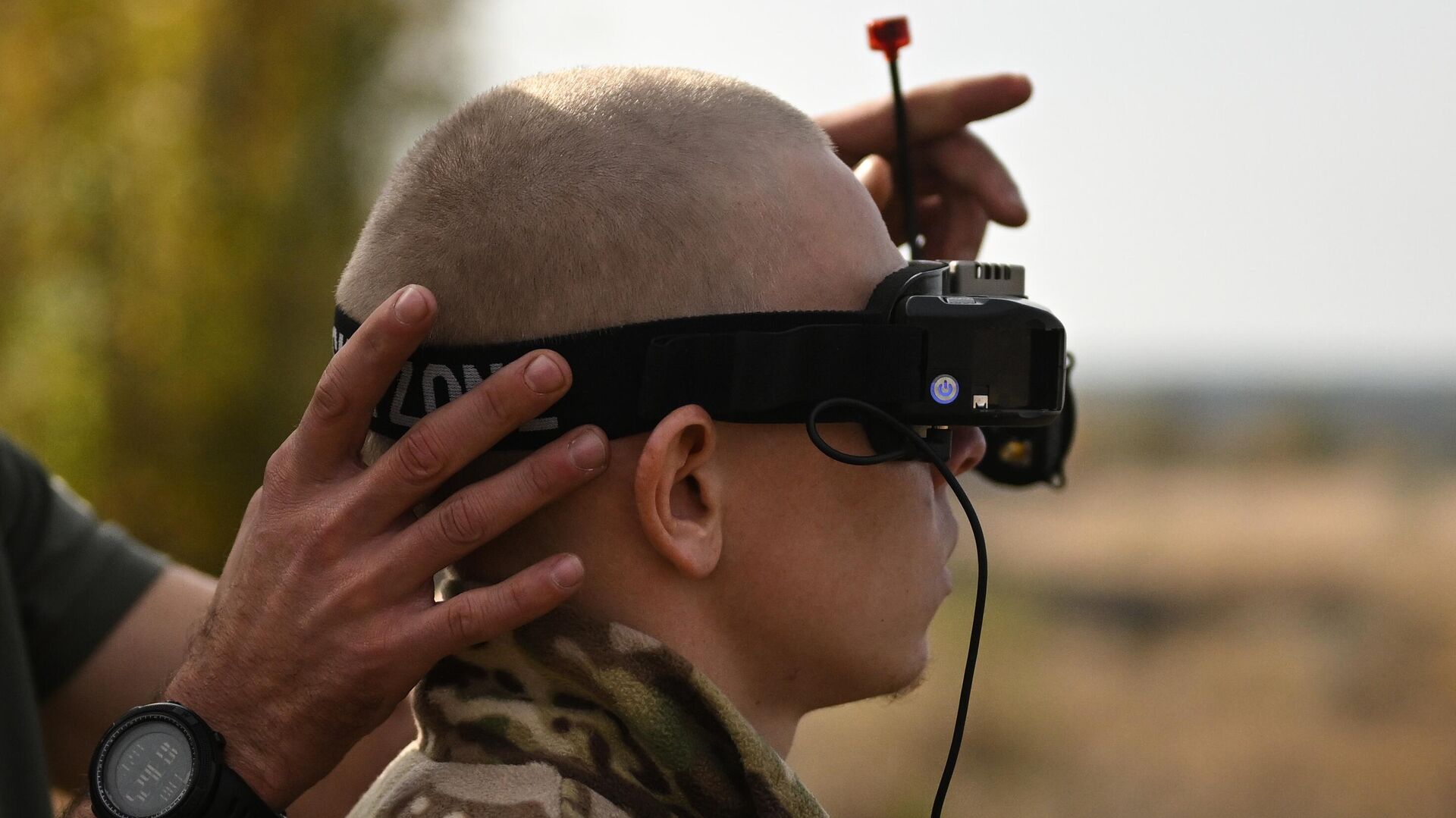https://sputnikglobe.com/20240405/flight-range-of-russian-fpv-drones-increases-to-130-kilometers-1117754480.html
Flight Range of Russian FPV Drones Increases to 130 Kilometers
Flight Range of Russian FPV Drones Increases to 130 Kilometers
Sputnik International
The Russian company Hermes produces the first available domestic systems of interference-proof communication for FPV drones, thanks to which the flight range of such drones has increased to 100-130 kilometers, Alena Balandina, development director of NPO Kaisant, the "parent" company of Hermes, told RIA Novosti.
2024-04-05T08:24+0000
2024-04-05T08:24+0000
2024-04-05T08:26+0000
military
russia
drone
drone warfare
drone attack
strikes
military
https://cdn1.img.sputnikglobe.com/img/07e7/0a/18/1114445180_0:105:2947:1762_1920x0_80_0_0_81fe785e19a0ebdf94e5de81c9c0d4bb.jpg
The Russian company Hermes has produced the first available domestic systems of interference-proof communication for FPV drones, thanks to which the flight range of the drones has increased to 100-130 kilometers, Alena Balandina, development director of NPO Kaisant, the parent company of Hermes, told Sputnik.According to Balandina, under ideal conditions, drones equipped with Hermes communication systems can fly 130 kilometers.The developer said that previously, the range of most drones of this type did not exceed 70 kilometers.Modern FPV drones pose a great danger to servicemen on the battlefield. They are used for radio and optoelectronic reconnaissance and to distract radar and missile systems during an air strike. FPV drones can be equipped with special devices for dropping ammunition, and thanks to protected communication channels they are resistant to electronic warfare.NPO Kaisant was founded in 2022. The company specializes in the development and production of systems for electronic warfare against unmanned aerial vehicles, including directional anti-drone guns, dome suppression systems, and compact trench systems.
https://sputnikglobe.com/20240403/watch-russian-drone-operators-explain-how-they-disrupt-ukraines-military-plans-1117704715.html
russia
Sputnik International
feedback@sputniknews.com
+74956456601
MIA „Rossiya Segodnya“
2024
Sputnik International
feedback@sputniknews.com
+74956456601
MIA „Rossiya Segodnya“
News
en_EN
Sputnik International
feedback@sputniknews.com
+74956456601
MIA „Rossiya Segodnya“
Sputnik International
feedback@sputniknews.com
+74956456601
MIA „Rossiya Segodnya“
russian fpv drones, flight range, interference-proof communication
russian fpv drones, flight range, interference-proof communication
Flight Range of Russian FPV Drones Increases to 130 Kilometers
08:24 GMT 05.04.2024 (Updated: 08:26 GMT 05.04.2024) First-person view (FPV) drones have significantly impacted modern warfare by providing real-time, immersive aerial surveillance and reconnaissance capabilities. FPV drones are used for various purposes, including target acquisition and precision strikes, enhancing overall operational efficiency and reducing risks to personnel.
The Russian company Hermes has produced the first available domestic systems of interference-proof communication for
FPV drones, thanks to which the flight range of the drones has increased to 100-130 kilometers, Alena Balandina, development director of NPO Kaisant, the parent company of Hermes, told Sputnik.
"NPO Kaisant has created the separate division design bureau Hermes, which specializes in developments unique for the Russian market of interference-resistant communication systems for FPV-drones, which allows their flight range to be increased up to 100 kilometers," she said.
According to Balandina, under ideal conditions, drones equipped with Hermes communication systems can fly 130 kilometers.
"However, under the most adverse conditions, we can guarantee the specified distance of 100 kilometers. The flight range of FPV drones depends, among other things, on weather conditions, interference, and the work of the enemy's electronic warfare," she specified.
The developer said that previously, the range of most drones of this type did not exceed 70 kilometers.
Modern FPV drones pose a great danger to servicemen on the battlefield. They are used for radio and optoelectronic reconnaissance and to distract radar and missile systems during an air strike. FPV drones can be equipped with special devices for dropping ammunition, and thanks to protected communication channels they are resistant to electronic warfare.
NPO Kaisant was founded in 2022. The company specializes in the development and production of systems for electronic warfare against unmanned aerial vehicles, including directional anti-drone guns, dome suppression systems, and compact trench systems.



